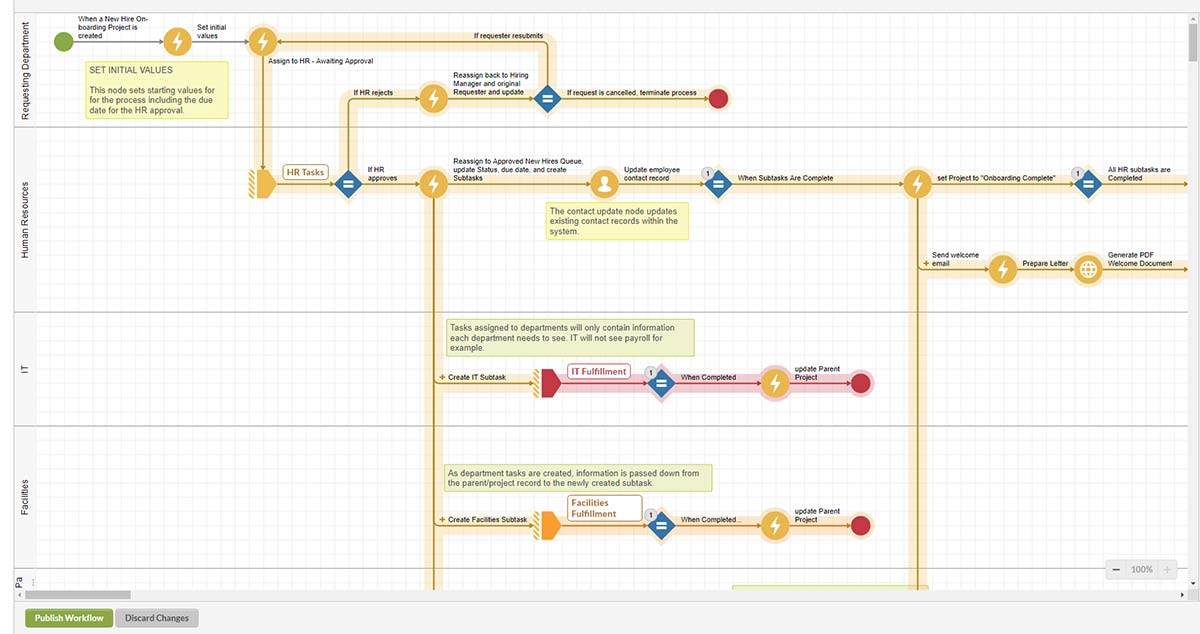The limiting factor on continuous improvement is no longer the BPMS technology – Lean BPM allows design and modification to take place at greatly increased speed. In fact, it will take longer to have the meetings, with staff and process stakeholders to agree the new process modifications, than it will take to actually create and push them live.
Live business processes in the operational environment can be easily changed with a Lean BPMS, simply and easily in minutes with no technical or IT input. The process modification is then pushed back into the live environment, and the Lean BPMS automatically creates the automated workflows, task lists and reporting from the visual workflow, including automatically enforcing pre-set business rules and creating a full audit trail of changes made, by whom and who then handles the tasks created within the new workflows.

Lean BPM removes the need to create a statement of requirements to hand over to the IT department, or specialist dev/coding resources, who then must work out how to achieve the deliverables. This frequently lengthy, and costly step is bypassed completely, allowing your business analysts and process improvement team to focus on what changes need to be made, pushing them into the live environment them and then seeing how changes result in actual process improvement.
Lean BPM speeds the iteration cycle of improvement and modification, creating an agile response to customer and stakeholder demands. Achieving greater responsiveness to the business environment, and in particular to the changing demands of your customers, is a cornerstone of CX improvement and optimization.
Lean BPM contrasts strongly with traditional solutions, such as Pega, but it also differentiates with low-code BPM solutions too, such as PNMsoft.
The major differentiator is this:
Lean BPM delivers core BPM functionality directly into the hands of the business analyst, process improvement team or operational staff working on the process.
No other BPMS delivers the ability for non-technical/IT staff to make and push live process designs and modifications.
Big BPM and low-code solutions both have the innate latency of requiring to some level, input from technical/coding specialists, and it is this which not only increases the cost, but more importantly introduces iteration latency and speed to market.
Lean BPM allows for those who analyze, understand and manage the business process to make the changes themselves and this removes the need for a dev team to spin up on delivering process changes.
Continuous Improvement becomes a far more practical reality with Lean BPM, which removes the latency caused by traditional and low code technology.
